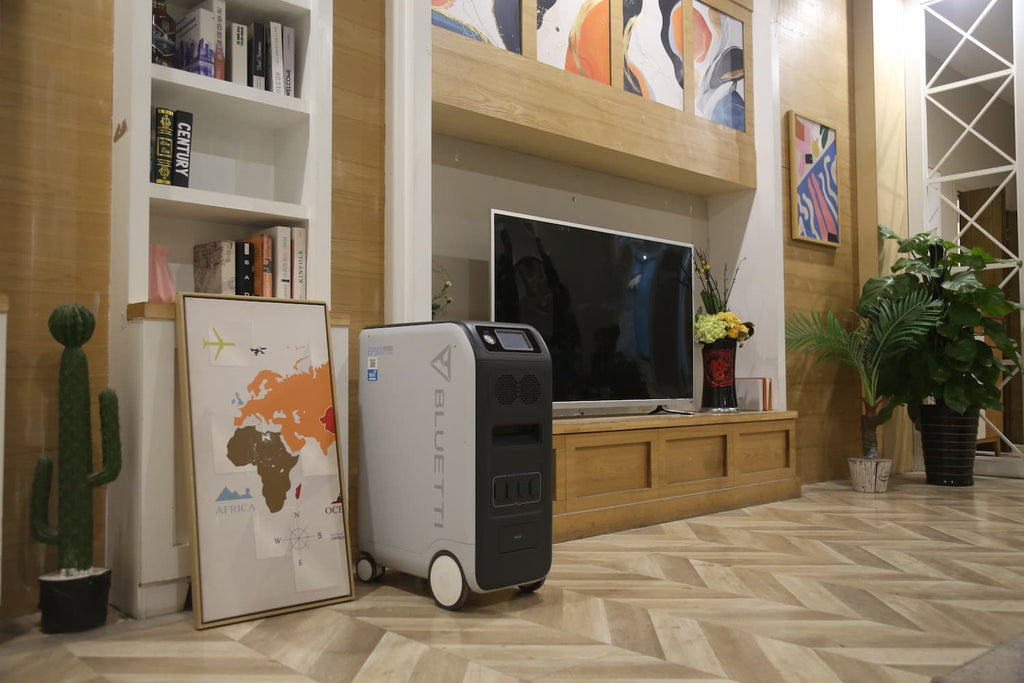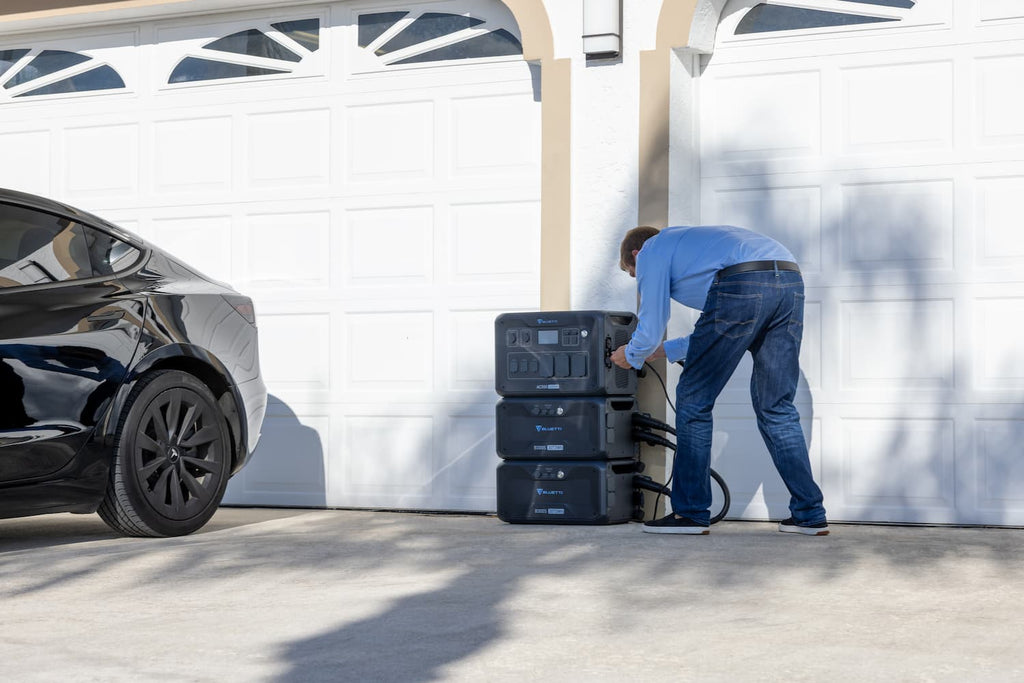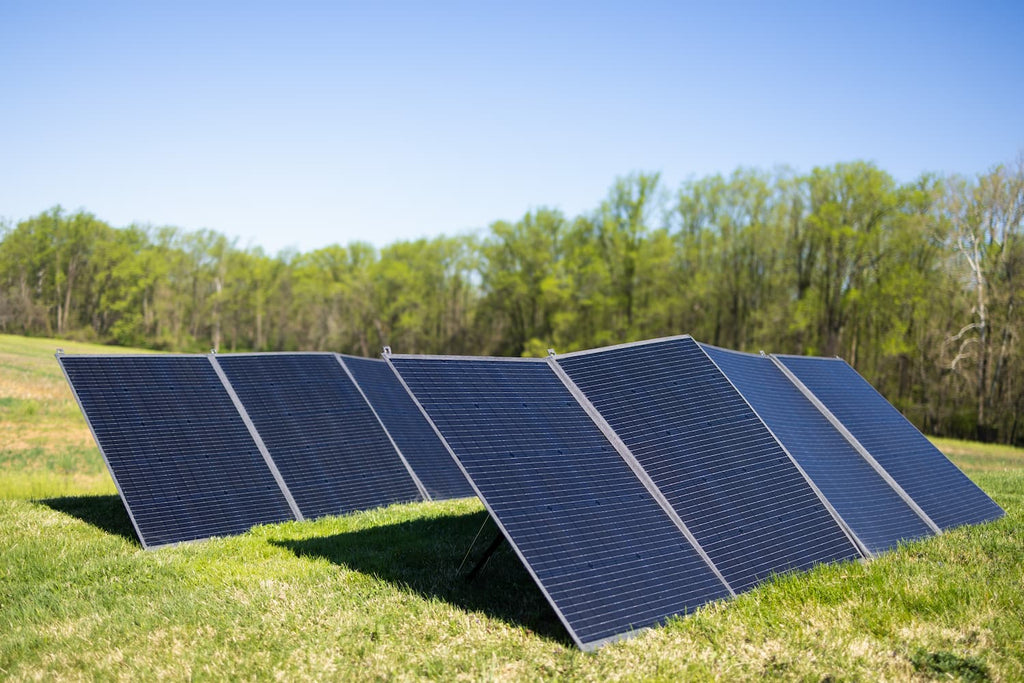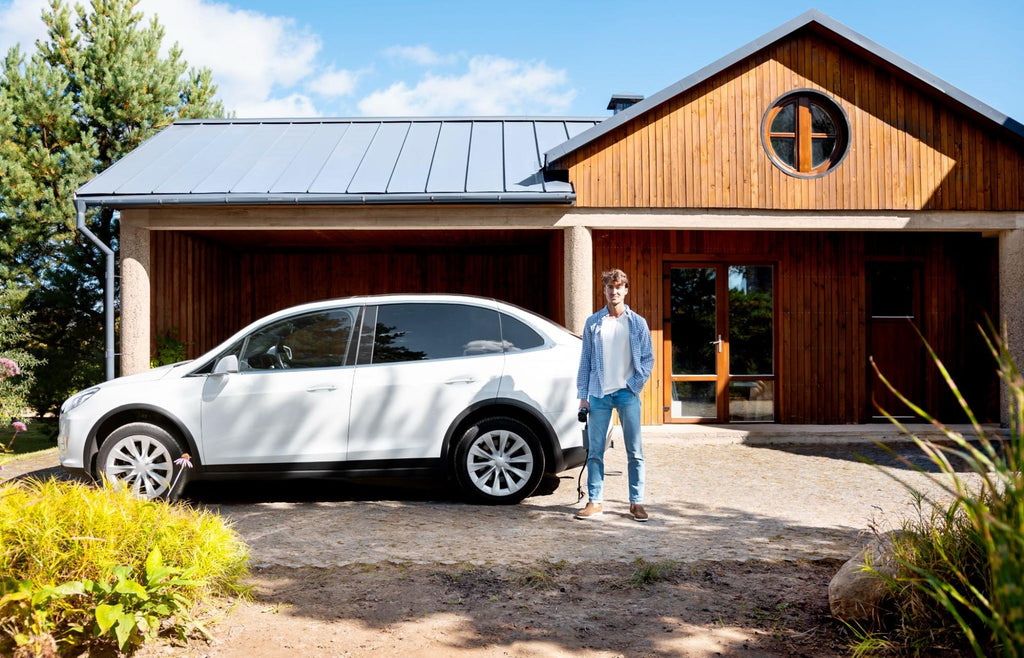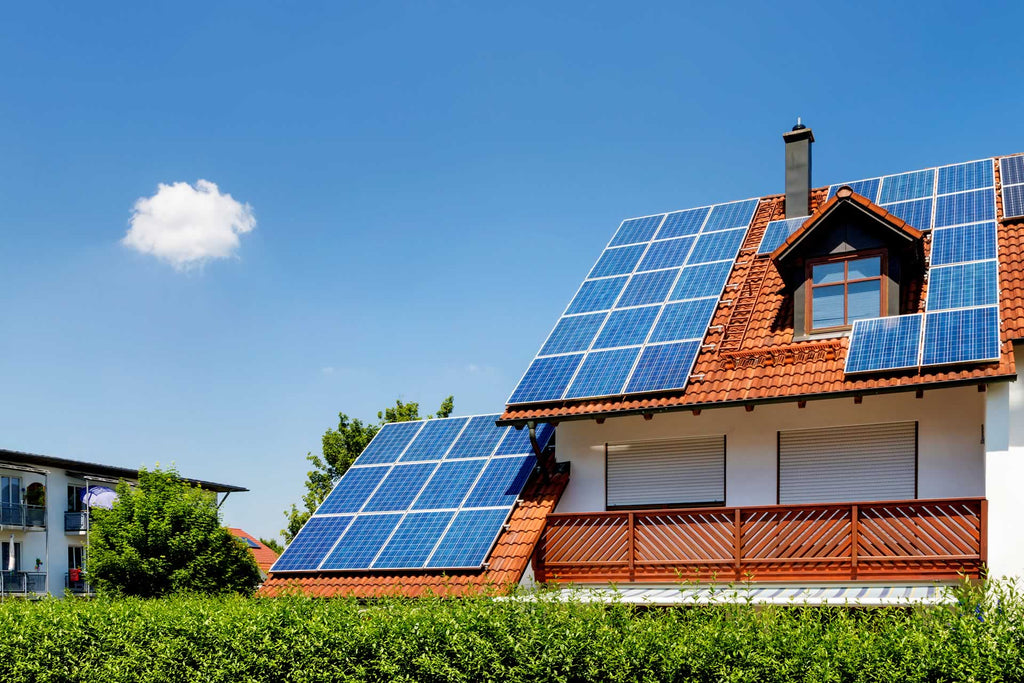Typically, the power outages and blackouts are addressed through noisy generators that add to the air pollution. Other times, it is a battery backup that we go with. Let’s dig deeper and find out which is the best option among them.
Battery Backup Vs. Generator
Home battery backups like Tesla Powerwall, LGES 10 H, and 16 H are there to store energy and back up your home electricity system at times of power outages. These batteries need the solar system to charge, or you can also charge the batteries through the power supply at your home. This makes them a more eco-friendly option for home power backup.
Not only are these eco-friendly, but they also may prove to be budget-friendly. Apart from the upfront cost, these batteries are not a financial liability for you. Compared to the generators, these backup options can save you thousands of dollars. If you have solar panels to charge the batteries, it lifts off the financial burden even more.
On the other hand, the generators are connected to your domestic electricity panel. They take the role when electricity shuts down and support your electronic appliances. These generators need fuel to produce electricity.

Generators consume fuels like natural gas, liquid propane or diesel to keep generating electricity. Some generators come with dual fuel options, which implies that you can use either fuel to produce electricity at home. You will always need to refill the generators with fuel after it has consumed the previous. However, this fuel consumption can pollute the air and can also be really noisy.
Battery Backup vs. Generator: How Do They Compare?
There are several aspects that distinguish battery backups from generators. The cost consumption, installation process, maintenance, and power supply period are all unique to each power supply option. The installment cost of the battery backup is higher than the installment cost of the generators.
However, the battery backup maintenance cost is lower than that of generators. Likewise, the generator can sometimes be irksome with the prickly noise it creates. On the other hand, the battery backup is a quiet source of electric supply.
|
Distinguishing Factor |
Battery Backup |
Generator |
|
Price |
The common home battery backup can cost you anything between $10,000 and $20,000. |
The upfront cost can range from $7,000 to $15000. Remember, it does not include daily fuel consumption. |
|
Installation |
Installation is complex and involves wiring the batteries with an inverter, household power supply, and, in some cases, solar panels. |
Installation requires connection to a domestic electricity supply and concrete padding for the placement. |
|
Maintenance: |
They require little maintenance. |
They require more regular fuel refills, oil changes, and component checks. |
|
Power Supply Period: |
It can only supply your home for a few hours. |
Generators can produce electricity as long as you keep refilling the fuel. |
What Is the Best Option for Home Power Backup?
Choosing the best option for home power backup is subjective to your needs and preferences. The best option for home power backup depends on several factors, such as budget, local climate, power supply requirements, and preferences regarding maintenance and environmental health. If you are eco-conscious, you may prefer going with battery backups instead of generators.
If you want a hassle-free power supply, the battery backup option is a better choice for you. On the other hand, if you live in areas where power outages last longer than a day, power generators might just be the right choice for you. If you want a backup electricity supply for larger appliances, a battery is certainly not the right choice. However, if you want a more quiet source of electricity supply, batteries should be the choice. You can also look for BLUETTI Top 5 Quiet Generators for House [2023].
You can even make your batteries a continuous source of electricity by connecting them to the solar panel. This renewable source of energy will supply you for even longer periods than the generators. By deploying solar panels with battery backup, you are contributing to the environment and reducing carbon footprints and noise pollution.
3 Battery Backup is Recommended for You
There are several battery options that you can choose from depending on your voltage preferences. All these products are noise-free and environment-friendly. Here are the easy-to-use and easy-to-install products that you can use to supply your domestic appliances.
You can even integrate these backup systems with solar panels to keep the electric supply flowing. This noise-free source of electric supply can also be a good contribution to the environment from your side.
-
BLUETTI EP900 Home Battery Backup

This BLUETTI EP900 Home Battery Backup comes with ten years of warranty, which, in other words, is an assurance of peace of mind for the next ten years. This home battery backup can supply appliances with energy requirements as massive as 9,000 watts.
This system, in general, can store 9,920Wh energy, which can be expanded up to 19,840Wh. Also, these lithium iron phosphate batteries are known for their stability and safety assurance. Even after 3500+ cycles, these batteries will still be 80% efficient.
-
BLUETTI EP800 Home Battery Backup

This BLUETTI EP800 Home Battery Backup can provide a steady supply of 7600 watts, which is enough to supply power-hungry appliances. It can store up to 9920Wh of energy; with an additional battery, it can store as much as 19840Wh of energy.
The manufacturing material of the battery is LiFePO4, which is short for lithium iron phosphate and is known to provide these electric supplies stability and safety. Furthermore, the system is designed especially for easy integration. It can easily be integrated into the solar panel system which is either already fixed in the home or is being integrated along with the battery supply system.
-
BLUETTI AC500 Home Battery Backup

The BLUETTI AC500 Home Battery Backup matches your relatively smaller power supply needs. It supplies 5,000 watts of steady electricity and can supply power surges as high as 10,000 watts. It implies that this system can supply 10,000 watts of energy for a transient period. It can store up to 3,720Wh, which can be expanded to 18,432Wh of energy.
This also comes with a LiFePO4 battery, which can recharge and discharge 3500 times, and it will still be functioning at its 80% efficiency. You can also smartly control this product using your mobile phone apps, and you get four years of warranty with the system.
How Long Can a Home Battery Power Your Home?
The duration for which these batteries can supply electricity to your houses can depend on various factors. One of the most important determining factors of how long the battery can supply is its capacity. The larger the capacity, the longer it can supply your home.
Furthermore, it also depends on the usage and size of the home to be supplied. If your household energy consumption is higher, the battery will not be able to sustain for longer hours and vice versa. Likewise, a battery backup system will be able to supply for a longer period to a home that is smaller compared to the bigger one.
Your usage pattern can also affect the time period a home battery power system can supply electricity. If you use a battery system to supply only the essential loads like lights, refrigerators, and basic electronics, the battery will last longer. Thus, there are several factors that can affect the longevity of the battery supply after a single charge.
Related articles: Solar On-Demand - Portable Solar Generators for Home Backup Power
Portable Solar Power for Home Backup - Reliable Energy Solutions in Times of Need
How Long Does a Home Battery Backup Last?
On average, the home battery backup can last for 5 to 15 years, but the years can vary depending on several other factors. Battery technology plays a significant role in determining the life of a battery. For instance, lithium-ion batteries typically last for 5 to 15 years, while lead-ion batteries only last for five years. Furthermore, the capacity of the charge cycles also affects the life of a battery. A battery with more charge cycles will last longer than the one with fewer charge cycles.
Final Thoughts
Power outages can sometimes be really irritative. You can opt for either a generator or a battery backup system. Both the options have their own pros and cons. A battery backup system is more eco-friendly and noise-free than a generator.
Although the installment cost for the batteries is higher than the generators, they are easy to maintain and need no maintenance cost. You can choose between the two depending on which suits you the best. If you want a battery backup, BLUETTI battery backup systems are one of a kind. You can choose from their diverse range of sizes and power supply options.
]]>


































































